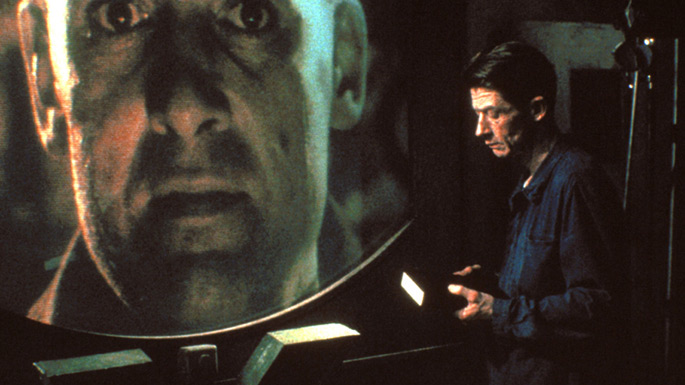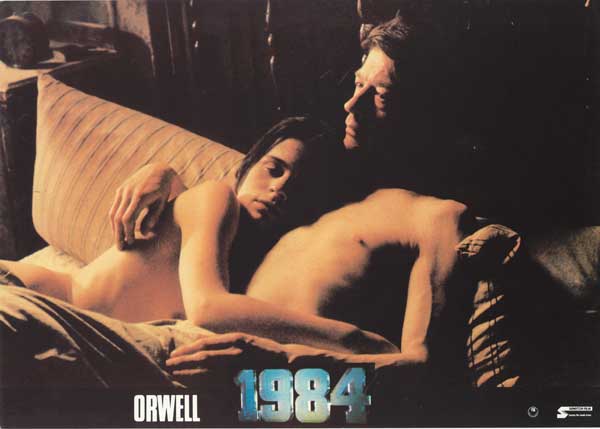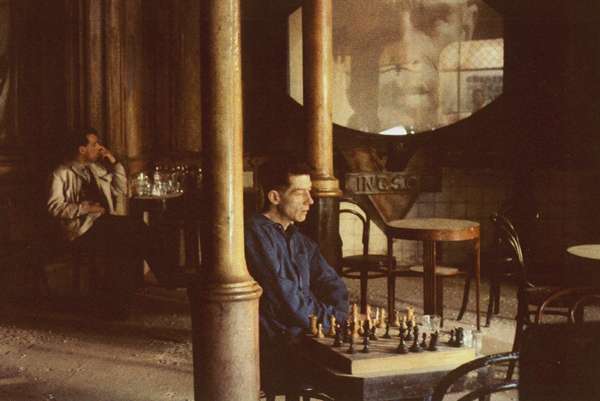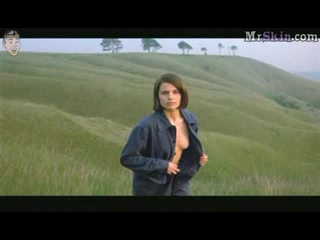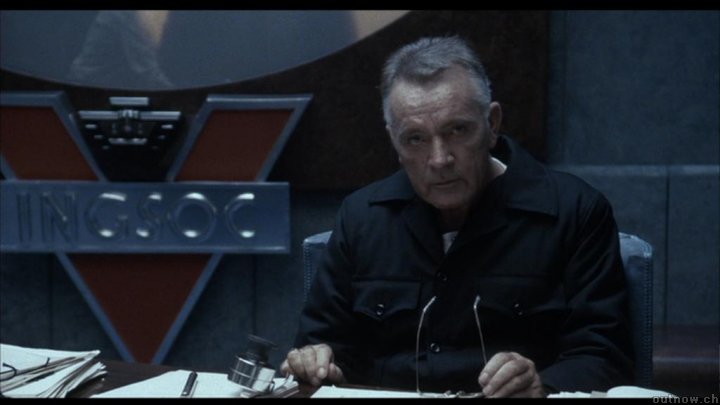This review was published in the June 1985 issue of Video Times. Criterion has brought out an excellent Blu-Ray edition of this film that I can highly recommend — along with Thomas Pynchon’s Foreword to the 2003 Penguin edition of Orwell’s novel. — J.R.
1984
(1984), C, Director: Michael Radford. With John Hurt, Richard Burton, Suzanna Hamilton, and Cyril Cusack [see below]. 110 min. R. USA, $79.95.
***½
Director Michael Radford’s 1984, filmed in England between April and June of 1984 (the same period during which the action of George Orwell’s famous 1949 novel takes place), is a film adaptation that succeeds brilliantly. In one fell swoop, it repoliticizes the novel — translating it into terms that speak directly to the present. Paradoxically, it pulls off this singular feat not through any spurious “updating” of Orwell’s terrifying novel but by situating the novel squarely in its own period. Consequently, the film’s action can be said to unfold simultaneously in three separate time frames: the past (specifically the 1940s, during which Orwell conceived and wrote his novel), the future (as we postulate it in this decade), and the present (the mid-1980s). Emerging from the interplay between these three contexts is one of the most rigorous and faithful literary adaptations in the history of cinema — a 1984 that one feels sure Orwell himself would have recognized and appreciated.
The scrupulous avoidance of high-tech décor, and the optimistic future-think that goes with it, was specifically demanded by Sonia Orwell, the author’s widow. The deliberately seedy, worn look of the sets and locations is continually fascinating. The film skillfully blends present-day buildings in London (the shell of Alexandra Palace for Victory Square, London University’s Senate House for the Inner Party’s swank headquarters) with distorted echoes of the past (old-fashioned English telephone dials, sepia images on giant TV screens) and subtle suggestions of Moscow and Berlin half a century ago. By honoring the sheer squalor or Orwell’s totalitarian anti-Utopia, the filmmakers follow a strategy already adopted by Ridley Scott in Alien and Blade Runner, but without any impulse to glamorize the unglamorous. Unlike the weak 1955 movie version of 1984, with Edmond O’Brien and Jan Sterling, this version of the grim future feels both dense and lived in.
With a plot involving mass hysteria, nearly constant video surveillance, brainwashing, physical torture, and other nightmarish forms of thought control, the film refuses to exploit or sensationalize those elements. The bleak facts of the novel are given their due, but nothing more. And the excellent cast implements this approach with a wholly functional professionalism that never tries to outclass the material.
While one might question the capacity of John Hurt, who looks whipped at the very outset, to adequately convey the hero Winston Smith’s journey from budding rebelliousness to abject submission, his physical resemblance to Orwell himself clearly expands the part. Suzanna Hamilton, a relative newcomer, is flawless in the difficult part of Julia, Smith’s lover and ultimate betrayer. But it is Richard Burton (in his last film role) as O’Brien, the Inner Party member who causes Smith’s capture, who turns in the most impressive performance. A last-minute casting choice, Burton joined the production two-thirds of the way through shooting. His quiet authority — without a trace of the bombast that marred many of his previous parts — dominates the film.
–JONATHAN ROSENBAUM
— Video Times, June 1985

